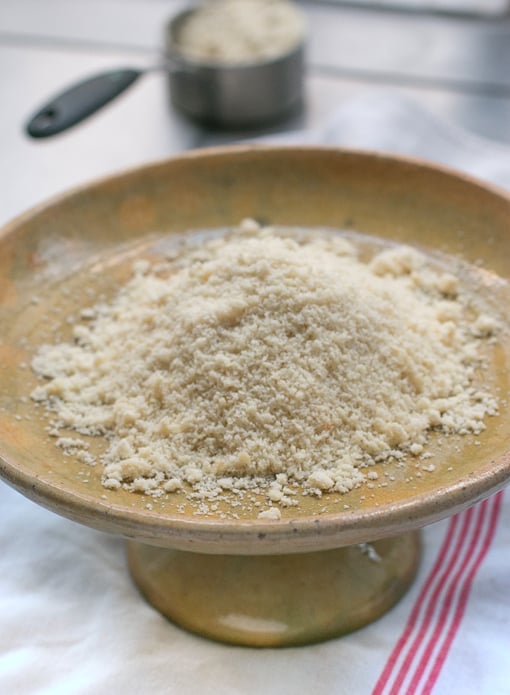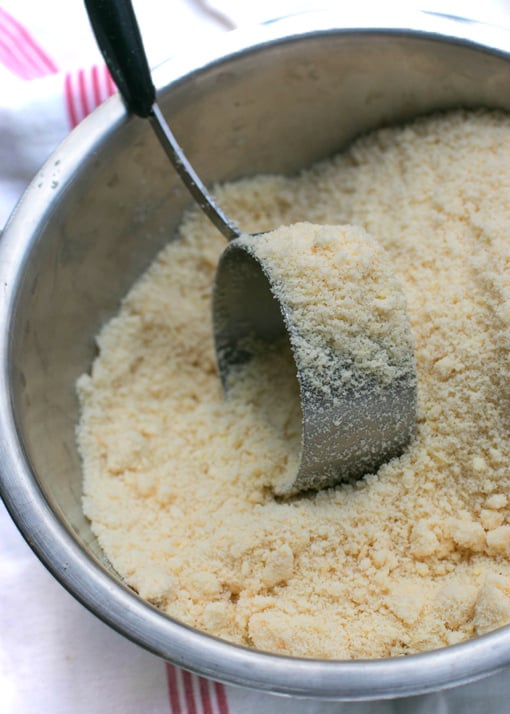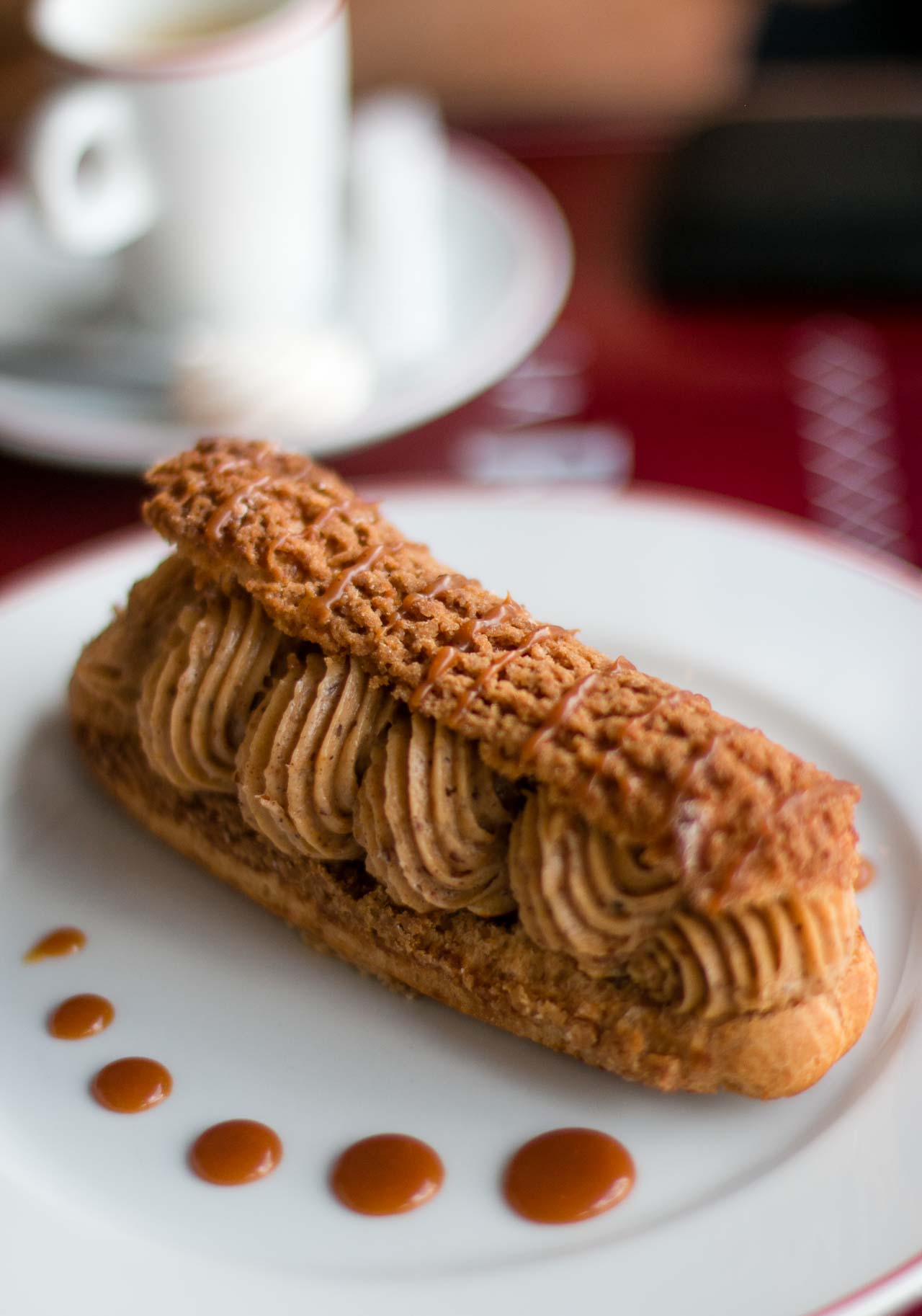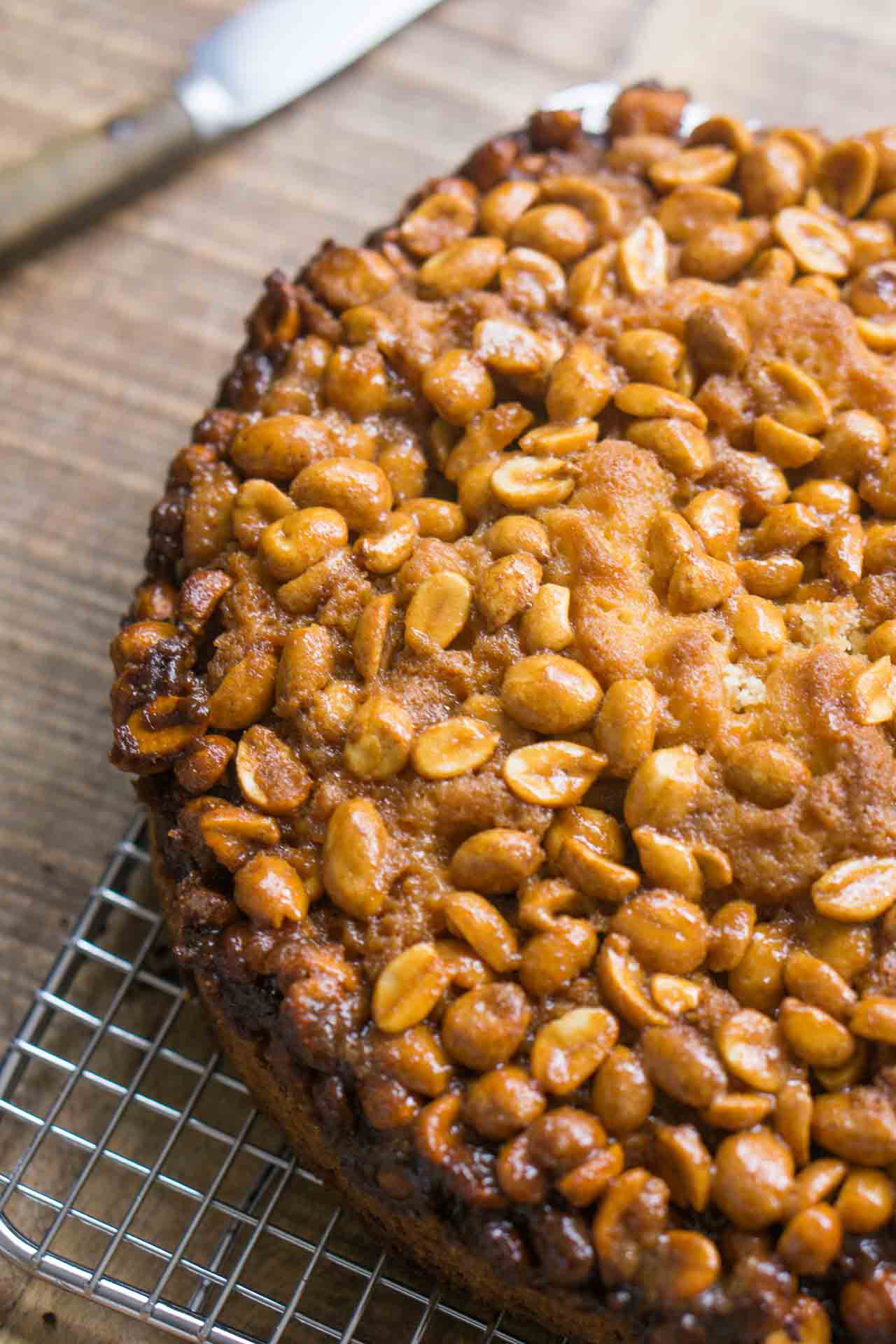What is Almond Flour?

Is almond flour the same as almond meal or ground almonds?
Yes. If you are unsure, check the ingredients on the package; the only ingredient listed should be almonds. If there are other ingredients, it’s not the same thing and should not be used in a recipe that calls for almond flour. Other names for almond flour are powdered almonds, almond meal, and almond powder.
(Some say that only blanched almonds are used for what is called almond flour, but I’ve seen unblanched almond “flour” listed as such, so that’s not always the case.)
What is the difference between natural and blanched almond flour?
Blanched almonds have had theirs skins removed. This is done by dropping them in boiling water for about a minute. Draining them in cold water, and slipping the skins off. Unblanched almonds have their skins on. Both kinds of almonds are then ground up for almond flour. A majority of almond flour you’ll come across is made from blanched almonds since most people prefer the lighter crumb and appearance in cakes and other baked goods. Some bakers say that unblanched almond flour can make baked goods heavier, but I’ve not found it to make a tremendous difference. So you can use either, unless one is specifically called for in a recipe.
Can I make my own almond flour?
Yes. It’s best to start with sliced almonds since they are already finely cut. (You can also use whole or slivered almonds, which will require more processing.) Your food processor or blender should have a sharp blade for best results. To make your own almond flour, I highly recommend that you grind the almonds with some of the flour or sugar called for in the recipe (use the weight equivalent for better accuracy); nuts ground on their own can heat up during the pulverizing and get oily. Flour or sugar helps prevent that. Generally about 2 tablespoons of flour or sugar is the minimum you should use per 1 cup (120g) of nuts. Avoid processing more nuts than that at a time. If you need more, work in batches.)
To make your own almond flour, put the untoasted nuts in a blender or food processor and pulse them with the dry ingredients until the almonds are pulverized. Grinding the nuts with the motor running in a continuous stream will make them oily so be sure to pulse if using a food processor, or run the motor with an on-off motion if using a blender.
Another method is to use a nut mill, a rotary grinder that grates the nuts into a powdery mass. (Similar to this one on Amazon.) I used a vintage Swedish one for many years and if you plan to grind a lot of nuts, it might be a good investment. (Online reviews suggest that the newer ones aren’t as sturdy as the vintage models; you may want to check online auction sites or websites that list used items for sale to find one.)
My almond flour isn’t very fine. Will it make a difference?
Because nuts are not ground to uniform sizes, sometimes almond flour may be coarser than you want. If you desire a finer texture, such as for cakes, you can grind store-bought almond flour down with some of the sugar or flour called for in a recipe. But some recipes do fine with coarser almond flour, such as frangipane and pear-almond tarts.
Can I substitute almond flour for all-purpose (wheat) flour?
Because wheat contains gluten, a protein that provides the structure that holds cakes and other baked goods together, the answer is generally no. However in certain recipes, where just a small amount is called for, almond flour can sometimes be used in place of wheat flour. Much depends on the recipe but if the amount is 1 to 2 tablespoons, it’s likely that you can use almond flour. But that’s not necessarily the case for each and every recipe.
Where can I get almond flour?
Almond flour has traditionally been more available in European countries than it has been in America. Fortunately that has changed in the last few years and you can usually find it in well-stocked supermarkets (such as Trader Joe’s and Whole Foods) as well as online. Baking supply stores carry it since professionals tend to make frequent use of it. In Paris, I find it at stores that sell Arab products (such as Sabah, 30 rue d’Aligre) and G. Detou.
How do I store almond flour?
Almond flour will keep for up to one year. It’s best stored in a cool, dark place in a well-sealed container. Light and heat are the enemy of oil-rich nuts. Almond flour can also be stored in the freezer. If frozen, measure how much you need and let it come to room temperature before using.
Related Recipes and Links
Is it safe to eat apricot kernels?
















